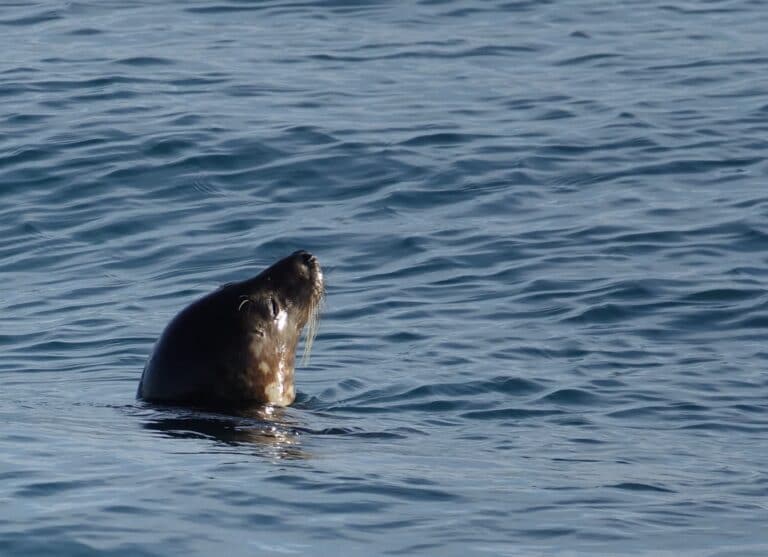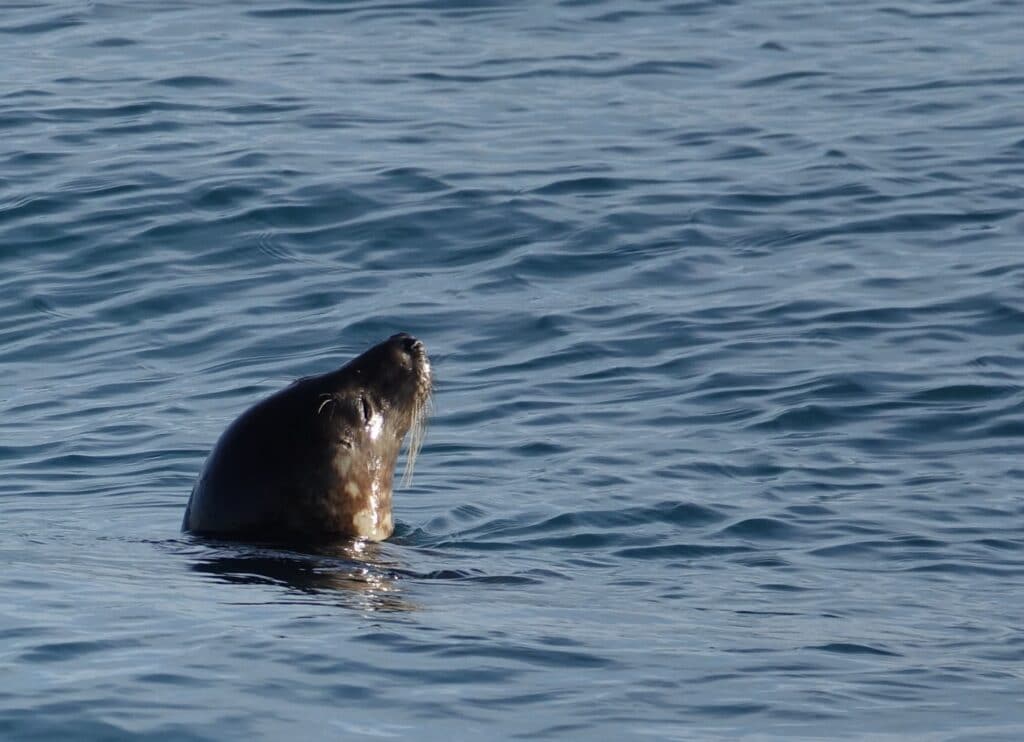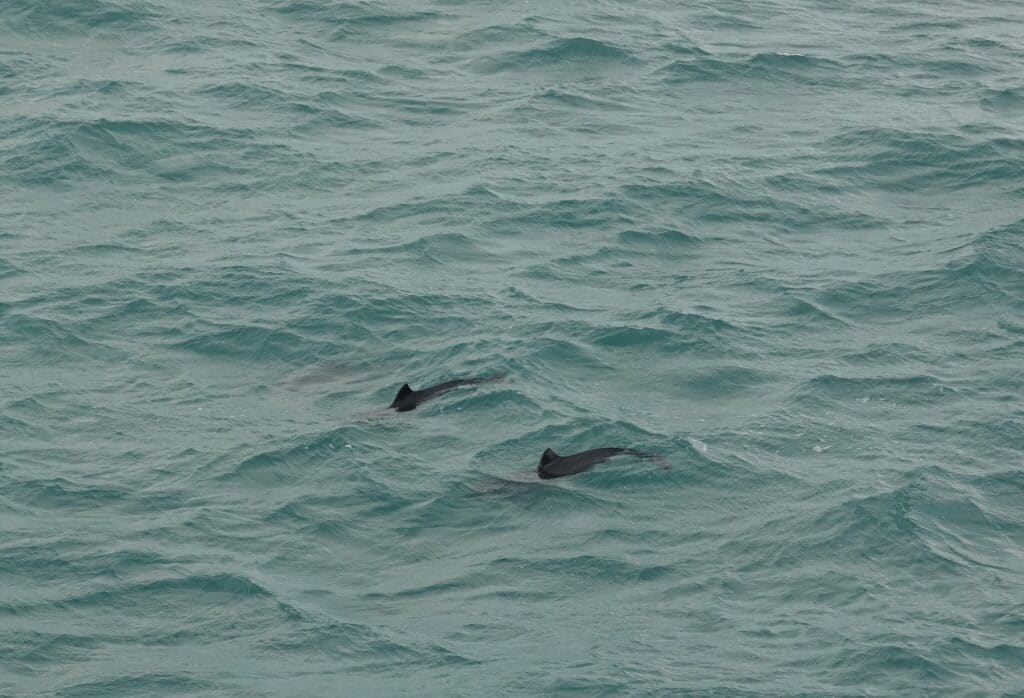Onboard a luxury superyacht is the only real way to go whale watching in Iceland.

On our gorgeous superyacht we went our whale watching from Reykjavik, in Iceland. We found porpoises and seals as well as so many guillemots, gulls, fulmars, eiders, and cormorants and the landscape was beautiful. But we didn‘t find big whales or dolphins so everyone got free return tickets for three years.
Our second day out whale watching from Reykjavik Old Harbour of 2020 was a lot of fun, there was quite a bit of swell from the storms from the previous couple of weeks combined with the storm due the next day. Despite that the sky was clear, and the wind had dropped so it was actually a very beautiful day with the mountains all snow capped around us and a glimpse of Snæfellsjökull in the distance.
We rode the swell and the customers were in good spirits up on the top deck with the guide, being taught how to identity cetaceans, and the difference between a whale, a dolphin, and a porpoise. We also looked out for, and saw, many seabirds, which we use to spot whales in Faxa Bay as they often eat the same kind of fish so can be easily spotted diving down.
We went out past the beautiful islands towards the area that we normally find large marine mammals as there is normally a lot of food there and the hungry whales come to eat. All the boats on the water are in constant communication with each other, helping each other out, so between us, we covedred a huge area, all eyes on the lookout wanting to spot the first whales of the decade that the bad weather had meant previously escaped us.
Different areas of the bay outside Reykjavik have different depths, different sea bottoms, and so different fish spawn there at different times hence it‘s worth checking them all. Sadly despite our diligence, we didn‘t find any whales or dolphins today, which was a real dissapointment to the crew as well as the adventurous customers.
We gave everyone onboard free return tickets for three years so that they could come out with us again on the ship any time in the next 3 years to see the incredible whales, porpoises, and dolphins we have here just off the coast of Reykjavik and find out why it is the must-do in Iceland.
Coming to Iceland people often have to see the whales and the northern lights at the very top of their bucket lists, and rightly so! We love showing everyone both. If you have booked onto a whale watching tour with us you can come out with us to see the aurora for half price, but still aboard the luxury superyacht Amelia Rose.
Sea Trips Reykjavik sail daily from Reykjavík Old Harbour, Iceland. Our yacht, Amelia Rose was built as a superyacht in 2003 and as such is extremely comfortable and stable. However the seas often change here, and people are affected differently by the movement of the oceans. As such we have seasickness tablets available for free at the bar. We also have warm blankets and ponchos around the yacht for your comfort, though the inside of the ship is extremely warm and snug.
For more information on our boats, our trips, and any accessibility questions please email us at seatrips@seatrips.is and be sure to look through our FAQs.

What is the difference between baleen and toothed whales?
We see both toothed and baleen whales here in Reykjavik harbor, Iceland. Did you know that dolphins and porpoises are also part of the same family? www.uk.whales.org is a brilliant website that goes into a lot more detail however this is the basic description!
They write that;
“Baleen whales have baleen plates, or sheets, which sieve prey from seawater. Toothed whales have teeth and they actively hunt fish, squid and other sea creatures. Dolphins and porpoises all have teeth and rather confusingly are known as ‘toothed whales’ too!
Another obvious difference between baleen and toothed whales is the number of blowholes on top of their head; baleen whales have two whereas toothed whales have one. There are only 14 baleen whale species and they are generally larger than the 76 species of toothed whales – except for the mighty sperm whale, the largest toothed whale.”
If you are interested in learning more we recommend these websites, https://www.nationalgeographic.com/animals/mammals/group/whale-facts/ and https://www.worldwildlife.org/species/whale They have a lot of extra learning materials about cetaceans all over the world.


